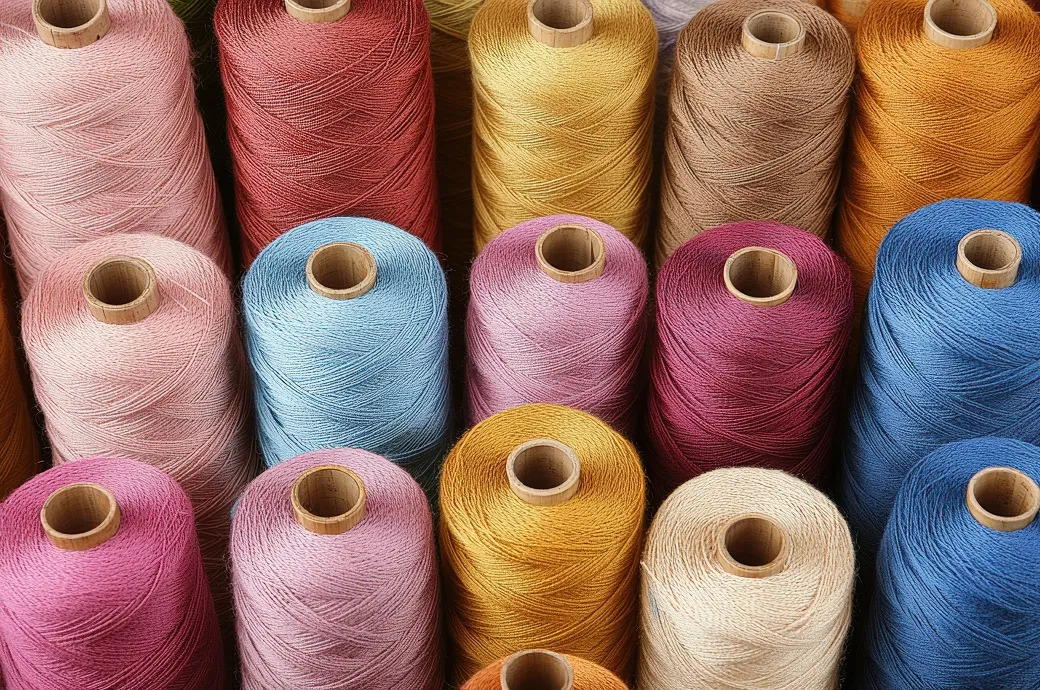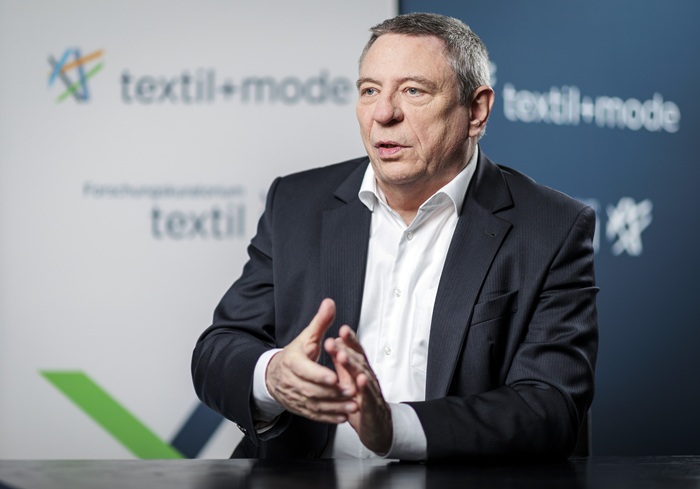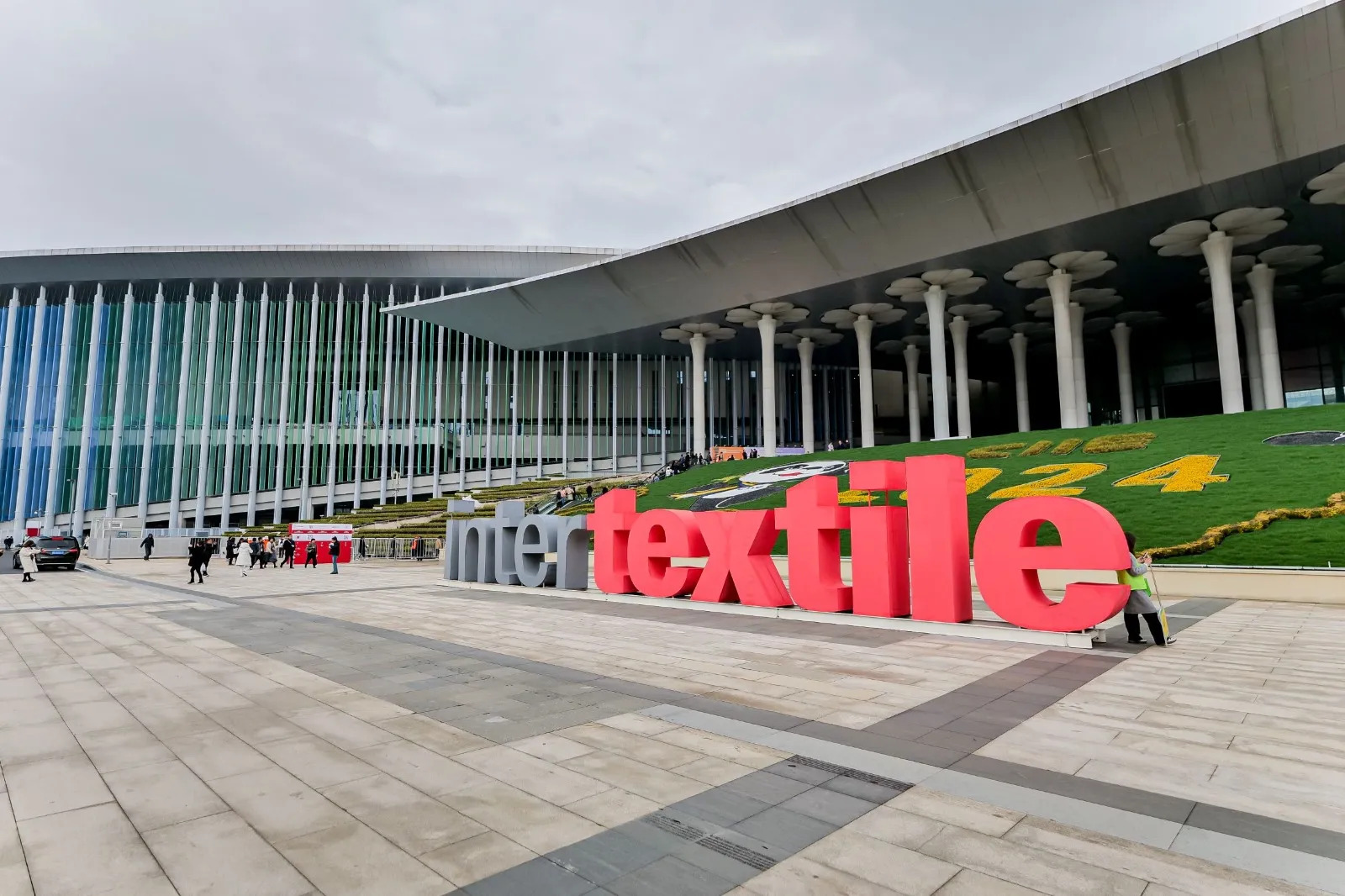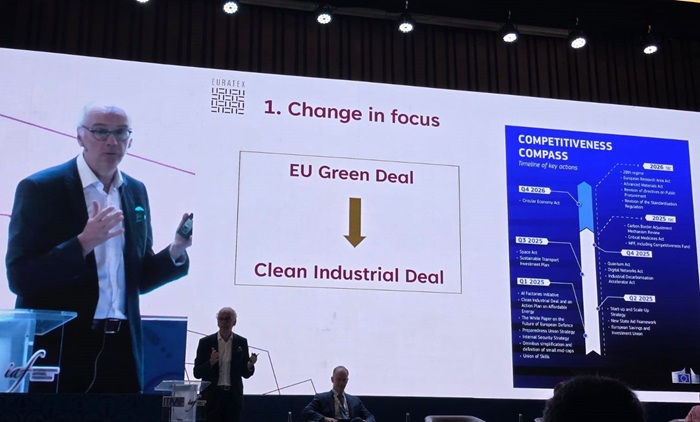FW
The Rana Plaza factory tragedy in 2013 drew international attention of factory workers in the country, and prompted the National Retail Federation (NRF) and other associations to collaborate to improve worker conditions. A couple of years ago, the National Retail Federation (NRF) partnered with global retailers and other associations to build the Safer Factories Initiative and the Alliance for Bangladesh Worker Safety.
Since then companies such as Gap, Sears, and Costco, along with organisations such as American Apparel & Footwear Association, Retail Industry Leaders Association, etc seek to prevent future tragedy through rigorous examination of Bangladesh’s garment industry. Thus, recently NRF representatives were in Bangladesh to review the progress to safeguard workers and improve their working conditions.
David French, NRF Senior Vice-President for government relations said they saw firsthand that significant progress was made to improve conditions at factories in the country and work was on track to see more improvements in the future. NRF Vice-President for Supply Chain and Customs Policy Jonathan Gold and French also toured factories and ports and met with local stakeholders and Alliance executives.
According to Alliance’s report, efforts have led to 661 factory visits, 591 approved corrective plans, and 6,177 payments to displaced workers. Besides, until July, 2015, 528 factories completed at least one remediation visit. Moreover, the Alliance also established a helpline in 414 factories connecting workers with resources. One of the Alliance’s biggest priorities though, this progress doesn’t ebb as the initiative enter the third year of its five-year commitment.
Mobile technology has now reached the textile town Tirupur in Tamil Nadu. Spinners are now using a newly designed mobile app that helps them track the demand-supply challenge. Indian Texpreneurs Federation is the force behind this app. It has selected 80 mills operating in polyester and polyester yarn with a capacity of 20-lakh spindles for this pilot project. The app lets the mills update the last-sold price of their yarn, stock position and related market data. The survey will be conducted periodically in a month to arrive at a standard price list of yarn from Tamil Nadu mills.
The application while protecting the identity of the mill entering the data about prices and stock, provides pure statistics such as average yarn selling price over the last week and average stock positions. The result of this exercise over the last four months was that the excess capacity gave buyers an upper hand and led prices of polyester cotton yarn down from Rs 185kg.Over the past few weeks in operation, the new system has helped Tirupur mills to find buyers for their yarn as high as Rs 161 kg.
The Paris edition of Premiere Vision is being held from September 15 to 17, 2015. For over 40 years, Première Vision has been held high for the quality and exclusivity of the fashion information it provides the global fashion industry.
The show features updated and newly adapted tools, redesigned informational forums and fashion seminars specifically developed by Première Vision for the benefit of international buyers. The covers highlights of the Autumn/Winter 2016-17 season. The fabric and accessory color ranges are featuring changes. Fabric color range is now made of fabric rather than paper. In addition to the poster and fabric color card, a new digital tool has been developed, forging a direct link between creative and industrial teams.
The tool allows industry brands, designers and manufacturers to render drawings into prints, jacquards, color-wovens, plains, harmonies and silhouettes for autumn winter 2016-17 with total color accuracy and an increased speed of execution and quality.
A new cutting-edge fashion information area – the Shoe Focus forum – has been developed. This cross-disciplinary fashion information forum showcases technical elements and components, ornaments and both leather and fashion material preferences for footwear, lending an exclusive and pertinent outlook to seasonal trends and footwear manufacturing secrets for autumn winter 2016-17.
www.premierevision.com/
India is increasingly becoming a dumping ground for countries like China. After a panel of industrialists raised their voice against it during a meeting with the PM Narendra Modi, industry associations too have warned the government saying if not checked in time, domestic industry would be extinct.
Experts claim as much as 60 per cent of dumping happens from China, and as per unofficial estimates, the size of this trade varies between 20 and 40 per cent. Chairman for Policy, Apparel Export Promotion Council Premal Udani, said that if the dumping activities continue without getting checked in time the domestic textile industry will be extinct over the next few years. He added that China, facing over capacity situation, has for long been dumping their fabrics and ready-made garments in the Indian market through Bangladesh, Nepal, Vietnam and even Cambodia.
He appealed to the government to ensure that Indian borders are better policed, and the customs officials undertake vigorous inspection of the country-of-origin of goods being shipped in, while engaging in better terms of trade with the neighbouring countries. He pointed out that China uses tactics like sending shipments via countries like Hong Kong, Vietnam, Bangladesh and Cambodia to avoid customs inspections. Even companies such as Birla Cellulose, Century, and other textile mills have expressed concerns over the rise in dumping.
www.aepcindia.com
Garment manufacturers in Aba, the commercial centre of Abia state, Nigeria, are seeking support from government agencies to produce seamless products that would withstand competition in international markets. Manufacturers have specially appealed to the Bank of Industry (BoI) and the Nigerian Export, Import Bank (NEXIM), for this purpose.
Manufacturers have urged the Central Bank of Nigeria (CBN) to use part of the N220 billion small and medium enterprises fund, to acquire modern equipment needed in the industry, which would help in finishing of their products. They feel that the garment makers in Aba have the capacity to manufacture for local and export, with the right facilities and equipment.
The President of Association of Tailors and Fashion Designers (ATFAD), Onyebuchi Nwaigwe, says if sector operators are properly empowered, then good quality products would be produced, and this would help create jobs and contribute to the country’s GDP. Besides, he urged the Abia State Government to fulfill its promise of developing the industrial cluster at Umukalika in Obingwa Local Government Area. This would create a more conducive environment for the leather and garment sectors of the country. Aba has one of the largest concentrations of micro, small and medium enterprises (MSMEs) and a huge number is engaged in leather works, steel fabrication and garment making. Estimates state that Aba has 110,000 shoemakers and 50,000 garment makers.
The region’s artisans’ ingenuity grabbed the attention of the United Nations Industrial Development Organisation (UNIDO) to collaborate with the Federal Government, to set up a Common Facility Centre (CFC) in the city, which would support the clusters to further develop their skills.
Bangladesh is setting up its first polyester staple fiber plant. This is expected to cater to 40 per cent of the country’s annual demand. The plant is an initiative to make the country self-sufficient in polyester staple fiber. This fiber is a key raw material for spinning mills.
The plant will come up on 30 acres of land and be a backward linkage for the garment sector. It will directly employ 2,000 and indirectly another 6,000 people. Once the factory is up and running it will produce 400 tons of polyester staple fiber a day. Raw materials for the plant will be imported from Arabia, India, Indonesia and China. Fabrics from polyester yarn are used extensively in apparel and home furnishings--- shirts, pants, jackets, hats, bed sheets, blankets, upholstery, furniture, and so on.
This move may inspire many other companies to set up polyester staple fiber factories in Bangladesh. Demand for the product is increasing by 12 to 15 per cent on a year-on-year basis. Polyester staple fiber is a fiber produced from synthetic chemical compounds and is strong enough to be twisted into yarn similar to natural fibers such as cotton or wool. It’s a substitute for raw cotton.
With the constant decline in merchandise exports since last December, the government aims to announce a package to boost shipments. Commerce and Industry Minister Nirmala Sitharaman indicated this while speaking at a recent convention. She said that the package would include extension of existing interest subvention scheme to many more sectors.
“The finance ministry has given us an outlay for interest subvention. We (commerce ministry) have laid out rules by which different sectors would be given this benefit. These will soon go the Cabinet for a decision,” Sitharaman said. Under the scheme banks provide three per cent interest relief on export credit and get compensated for the same.
The minister further added that the government will look into the ‘Merchandise Export for India Scheme’ for rewarding export performance, at the time of a mid-term review of the Foreign Trade Policy 2015-20, which will be held in the months of September/October 2017. Responding to the discussion on foreign investment in B2C e-commerce, she said that some states are yet to revert with their responses on the issue. However, she added that the government was not considering allowing foreign investment in multi-brand retail, neither had it received any applications from companies in this regard.
In Budget FY16, the FM had announced Rs 1,650 crores for interest subvention scheme for exporters. This amount is expected to be increased significantly. The rate of export credit in India is 11 to 12 per cent compared with 5.5 per cent in China, 6.2 per cent in Malaysia, 4.6 per cent in Thailand, 2.6 per cent in Taiwan and 2 to 3 per cent in the euro area except Greece. Talking about the delay in FTA talks with EU, she said that India is awaiting a response from the EU on why they chose to act against the country’s pharmaceutical sector, which is world-renowned as suppliers of authentic but cheaper generic medicines.
India Trend Fair will be held in Japan from October 27 to 29. It is an attempt to promote Indian textile products. The event is being organised by the Tirupur Exporters’ Association with the support of Indian embassy in Japan, the Japanese government and various trade bodies in Japan and India.
Textile exporters from clusters like Panipat, Karur, Jaipur, Mumbai and Delhi have been roped in for the event. Japan imports 90 per cent of its apparels from China and only three per cent from India. India wants to have at least 65 per cent share. The event will exhibit woven and knitted garments, home furnishing and handicrafts, sportswear, cushion covers, floor mats, decorative articles, bags, shoes, jewelry and fashion accessories.
The scope of the fair has gone beyond textiles and materials to encompass a fusion of new fashion and cultures. It’s aimed at helping India enter the Japanese mindset and fuel the Japanese people’s interest in India, which will also help tourism grow. Buyers would include manufacturers, wholesalers, trading companies, importers, select and specialist shops, department stores, volume and online retailers.
In July, there was a rebound of 100 per cent man-made fibre yarns' exports from India, especially polyester and viscose. A total 6.09 million kg of man-made spun yarn was exported. Out of this, 1.23 million kg was acrylic yarn, 2.19 million kg was viscose yarn, and 2.63 million kg was polyester yarn. July’s, viscose yarn export jumped 27 per cent, while value of polyester yarn went up 13 per cent. However, after a substantial pick up in June, acrylic yarn export dipped by 8.5 per cent. Unit price realisation was dipped US cents 11 for polyester from a year ago and viscose yarn dipped by 5 per cent.
polyester spun yarns were exported to 46 countries, reaching an aggregate $6.2 million, with a unit price realisation averaging $2.37 a kg. Totally, 2.6 million kg was exported, of which, 21 per cent was shipped to the US alone. Nearly, 16 new destinations were added for exports of polyester yarn of which, Nigeria, Dominican Republic and Colombia were the major markets.
Viscose yarn export was valued at $5.5 million or Rs 35 crores and the volume was at 1.83 million kg. This implies average unit price realisation of $3.04 per kg, which is US cents 13 higher than realised in May and US cents 15 lesser than a year ago. Viscose was exported to29 countries and Belgium was the single largest importer, worth $1.25 million. Besides, the US, Portugal, and Bangladesh were the fastest growing markets for viscose yarns, and Pakistan, Brazil and Guatemala were the new major markets in July this year.
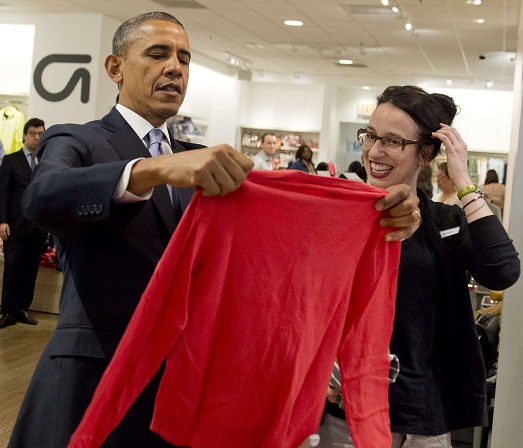
Though New York is considered a major shopping destination with variety and prices that attract tourists and locals, top brands such as J.Crew, GAP, Abercrombie & Fitch are losing customers. Young customers say that they are not happy with the fabric of the garment at GAP as it starts looking old after just one wash. Many others feel GAP is generic and that they do not identify with the label.
Changing face of shopping

‘Millenials’ or the young shoppers of today (younger than 35) shop differently. They tend to value good prices rather than logos and status. Apparently, they would be generating 40 per cent of retail spending by the year 2020. Herbert Kleinberger, an adjunct professor at New York University and a longstanding retail industry consultant believes teens are not shopping for clothes in malls anymore the way they used to and they use their disposable income to buy a lot of other things, such as entertainment and electronics.
Besides, the digital revolution moved shopping activity online, and simultaneously diminished the importance of malls as social meeting points for youth. Now, the younger generation spends time on other activities and stays connected through their mobiles.
The result, brands are facing the brunt with sales dipping. Recently, California-based GAP announced it would close about a quarter of its almost 700 locations in the US. J.Crew’s drop in sales resulted in cancellation of its planned IPO last year. The company has $1.5 billion of debt in its books. Simultaneously, though, competitors from other countries gained popularity in the US, for example, Japanese brand Uniqlo. The competition is not only fast, but also cheap.
Today, customers want to be different, they want to be individuals. Kleinberger feels now, in the US people don’t wear things that identify them through the brand as much. Uniglo opening of its flagship store on New York's Fifth Avenue, generated a hype almost as big as when Apple releases a new product.
Quick turnaround, a plus
Spanish fast fashion brand Zara, Swedish chain H&M are expanding in the US. The advantage of the so-called ‘fast fashion’ brands is their speed. Spanish apparel giant Inditex that includes brands such as Zara, Bershka and others, was founded as a single store in Spain in 1975. It had revenues of €12 billion and over 2,000 stores by 2014.
Foreign competitors are twice as fast compared to legacy brands such as J. Crew and GAP that take nine months to get their products to the market. The overseas brands simply copy new trends from fashion shows worldwide within a few days. Also, in the case of Zara, US stores are in contact with its headquarters in Spain on a daily basis.
Experts say, they take all information coming in every night and are constantly creating small new lines that they ship into their stores. At times, this happens every two weeks. Now these lines are small enough and allow the company to quickly get rid of garments that are not selling.
The US retail market, looks like, it is going through a complete overhaul as many foreign chains are growing and grabbing the market.


